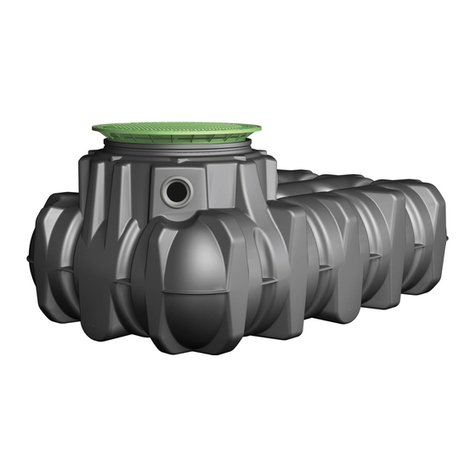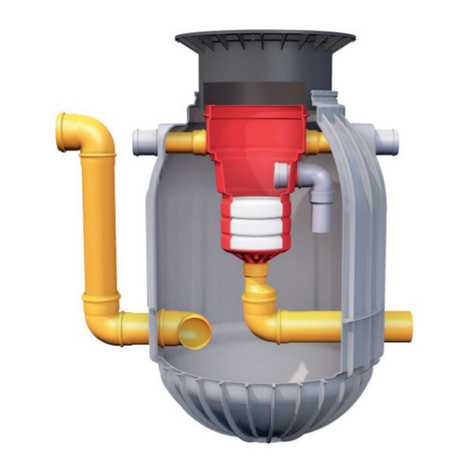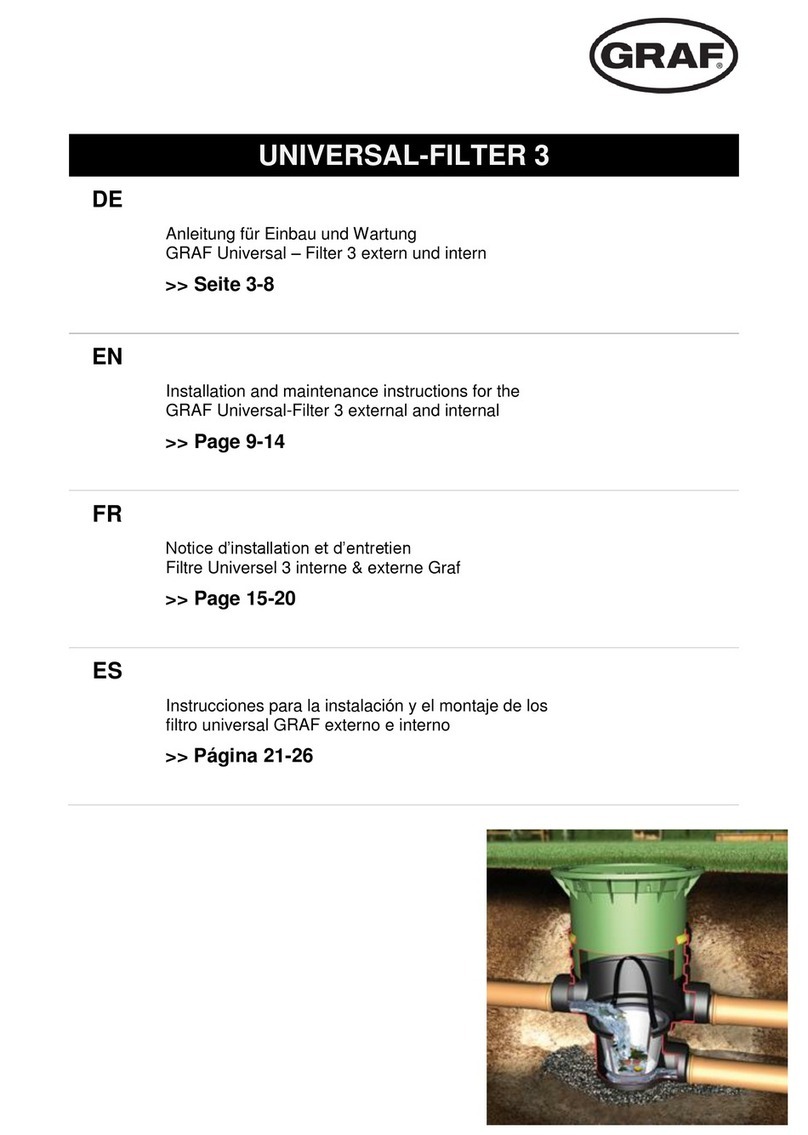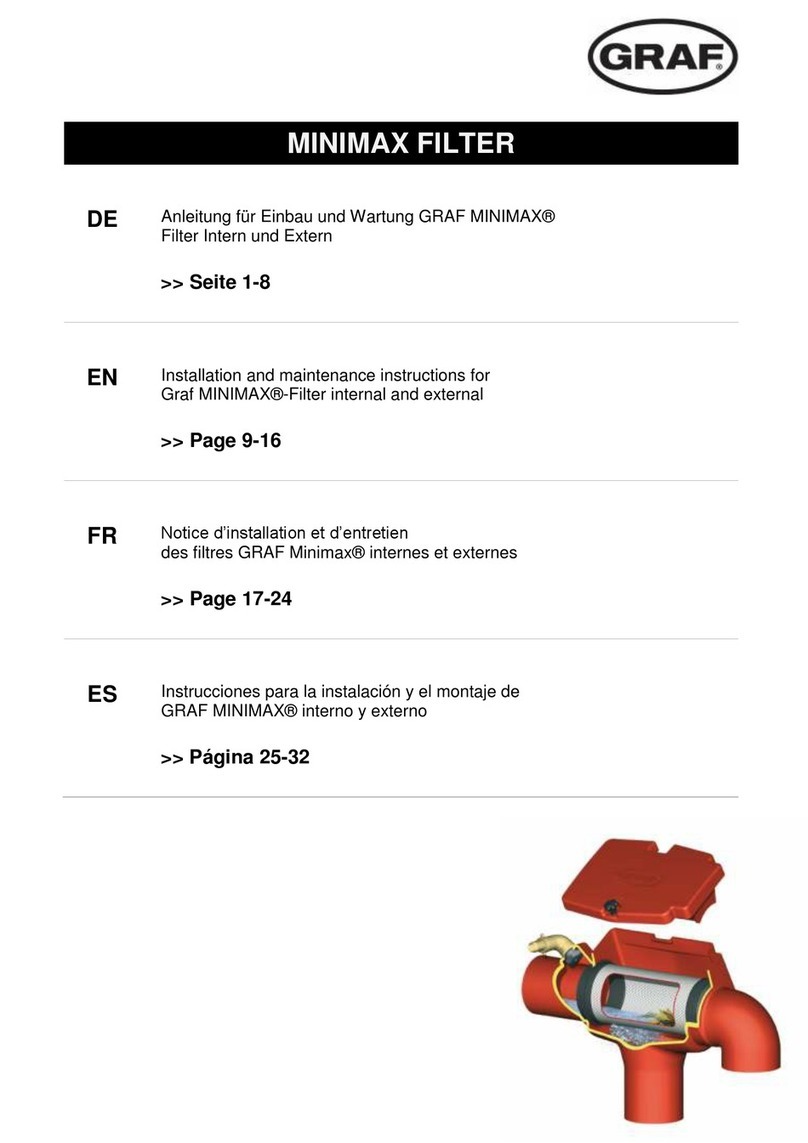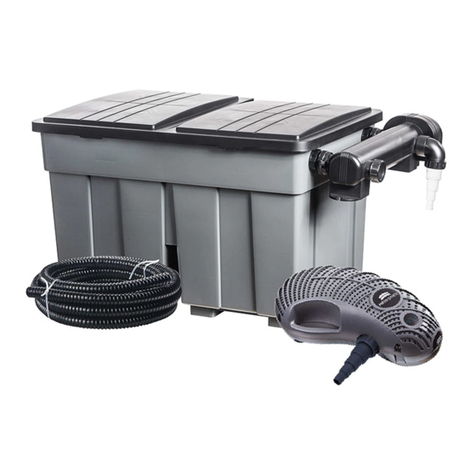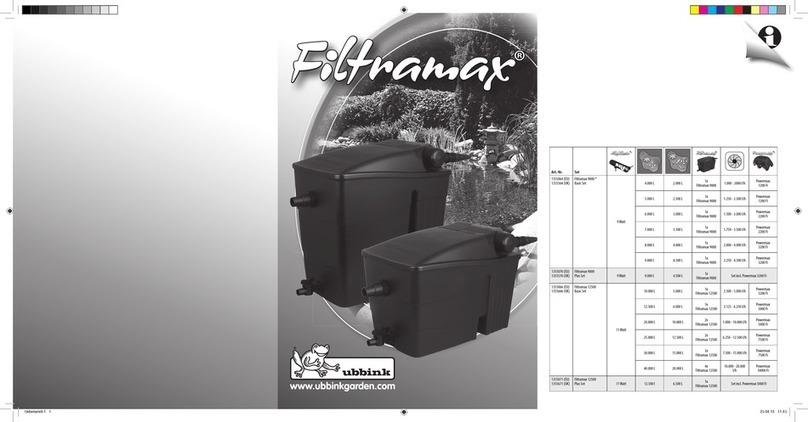Graf UP Series User manual
Other Graf Water Filtration System manuals
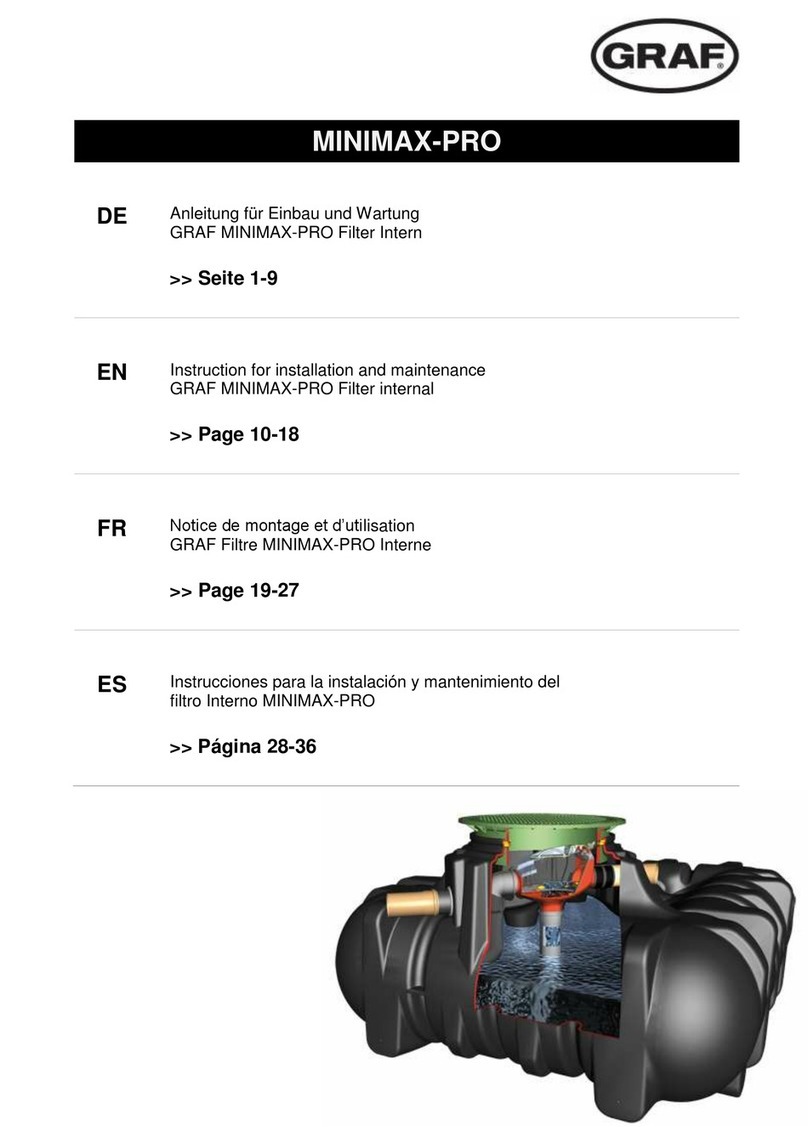
Graf
Graf MINIMAX-PRO Platin Package 3 Operating and maintenance manual
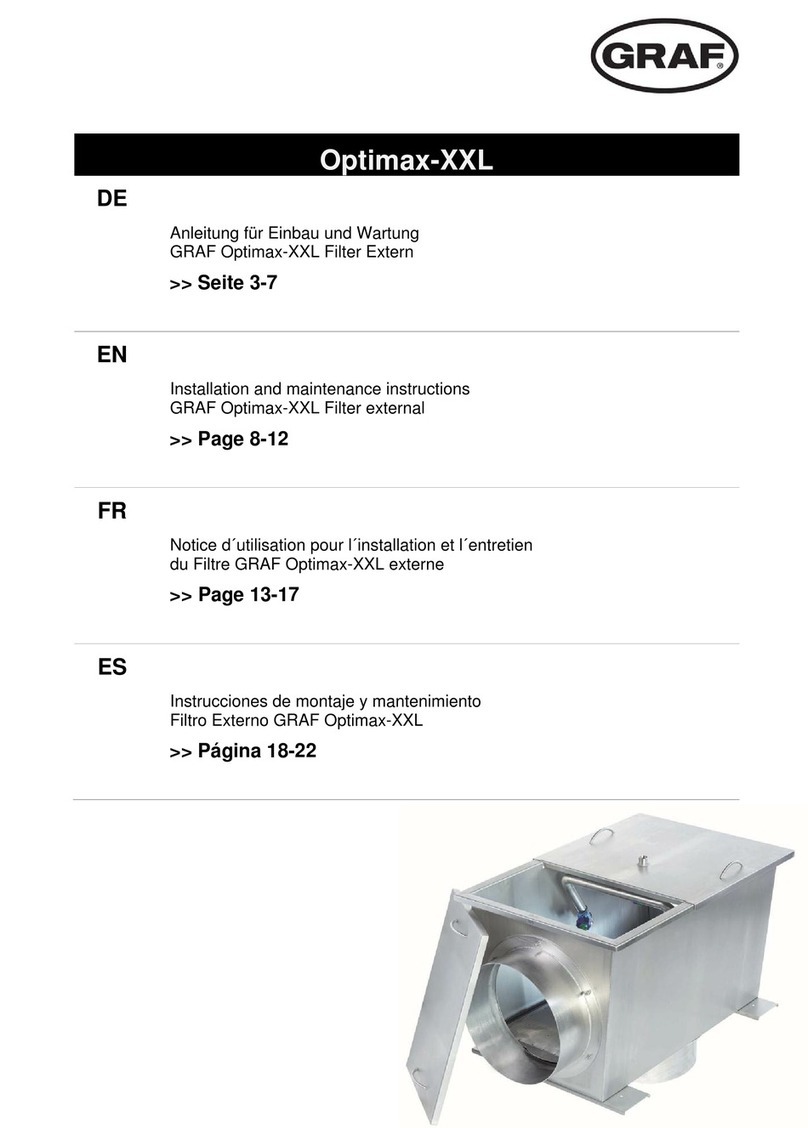
Graf
Graf Optimax-XXL DN300 User manual
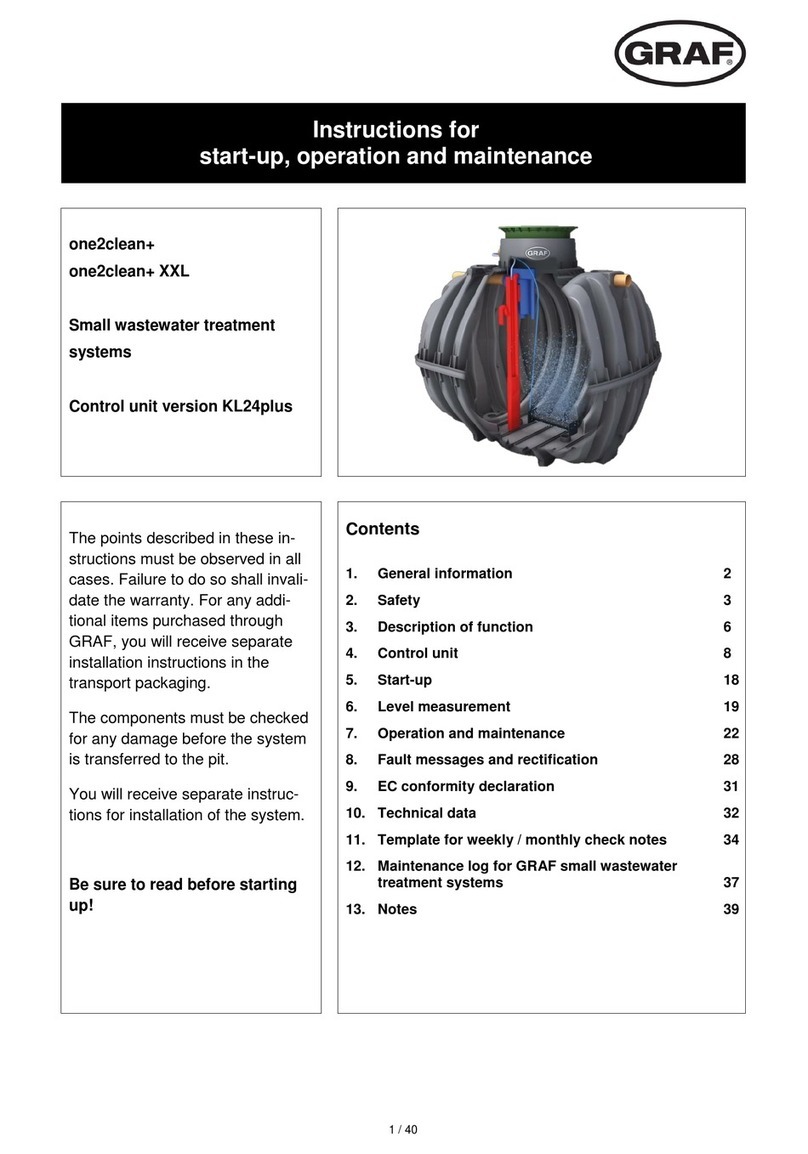
Graf
Graf one2clean+ XXL Installation instructions
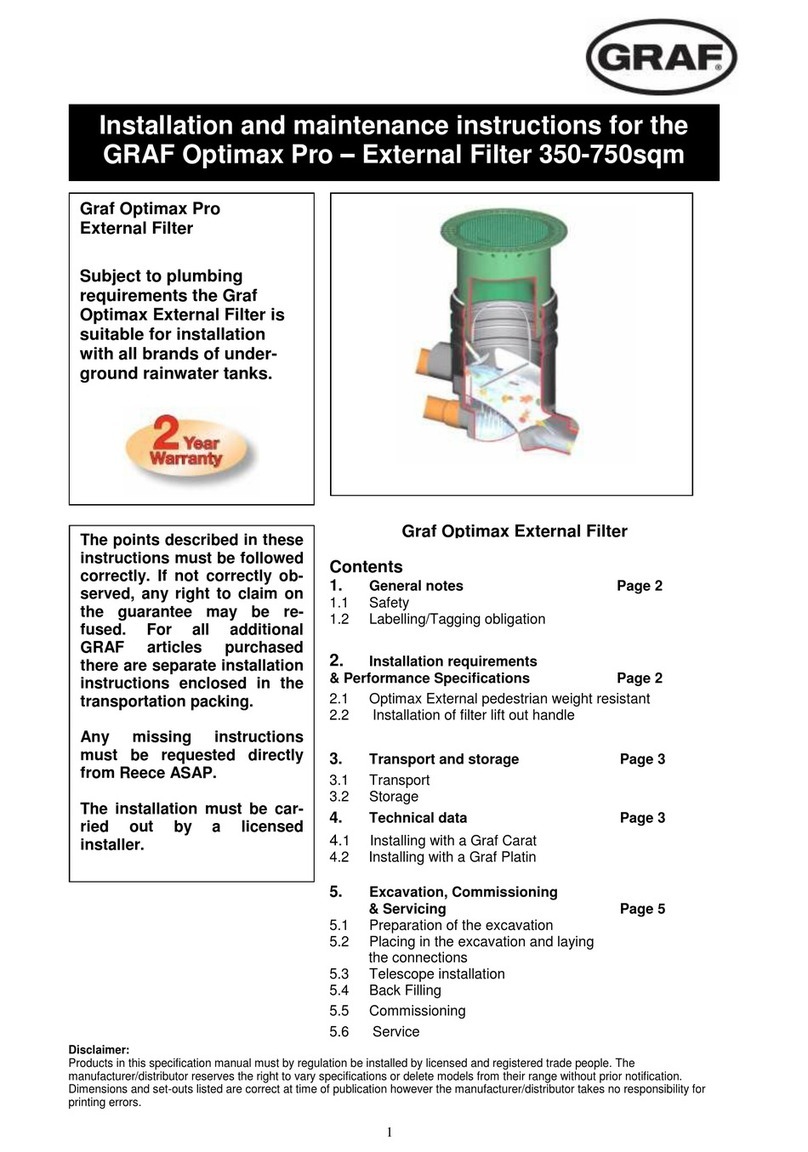
Graf
Graf Optimax-Pro User manual
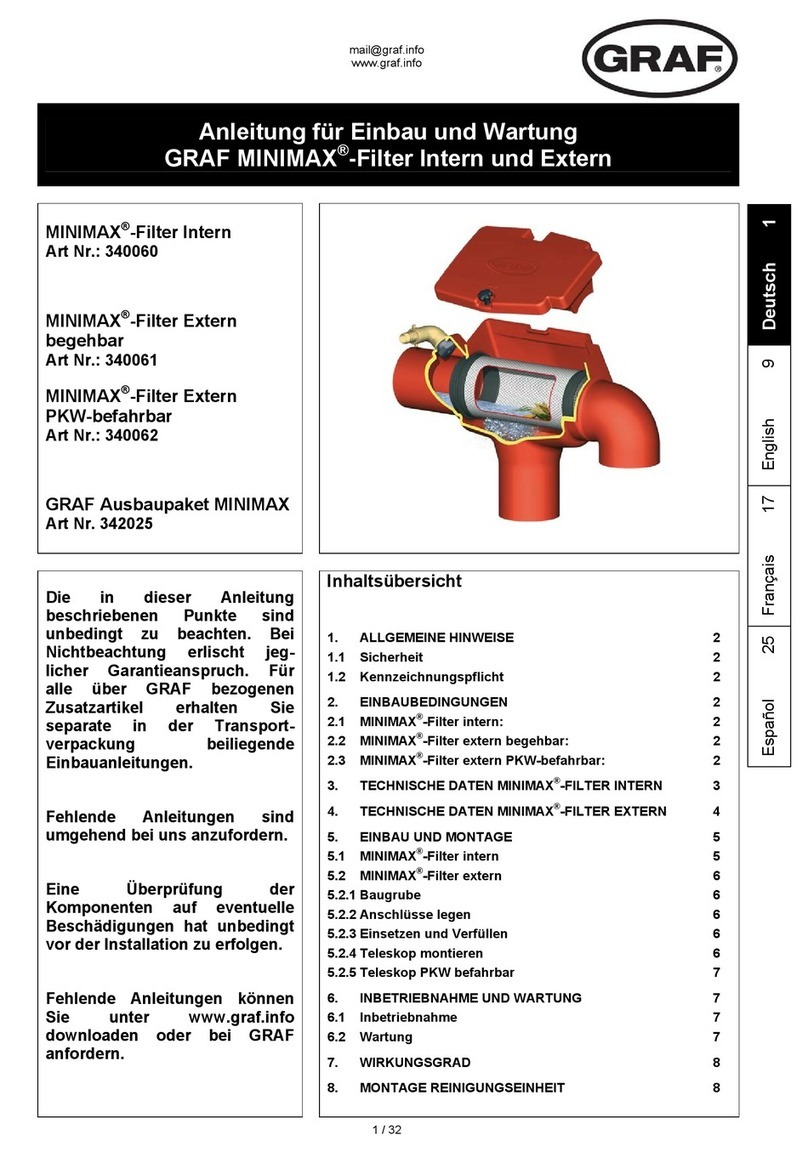
Graf
Graf MINIMAX 340060 User manual

Graf
Graf Optimax-Pro Operating and maintenance manual
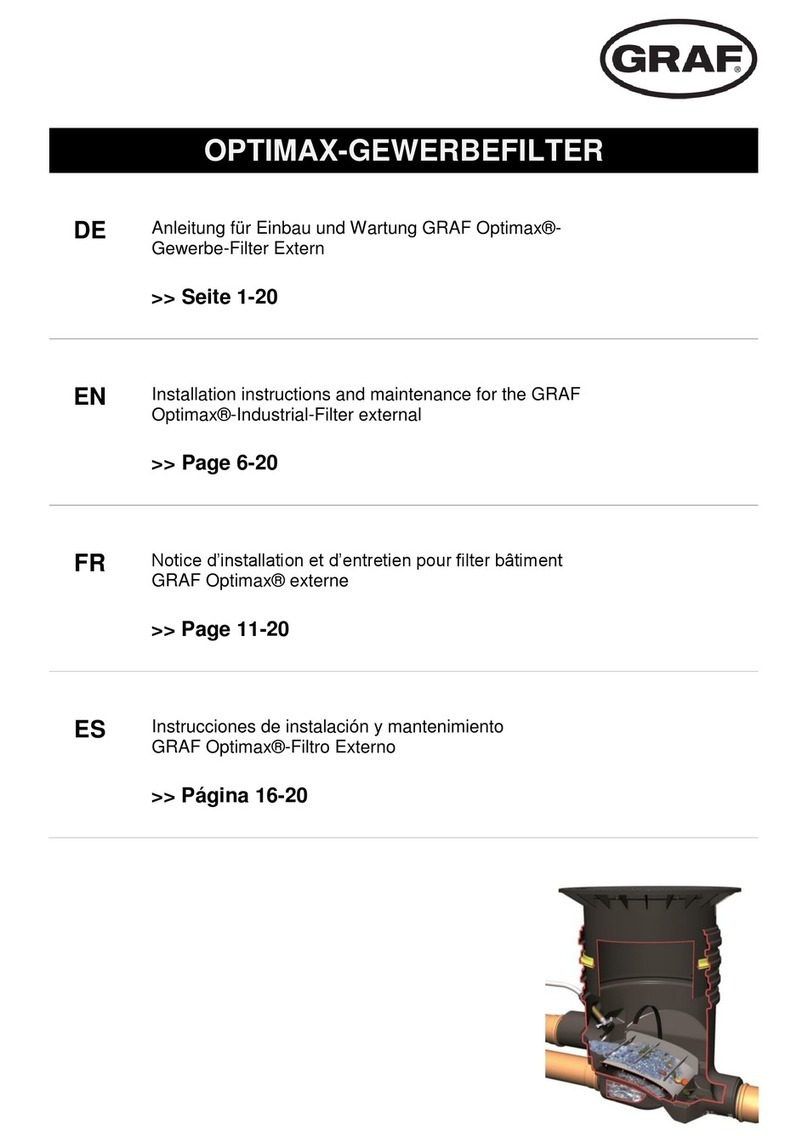
Graf
Graf OPTIMAX Instructions for use
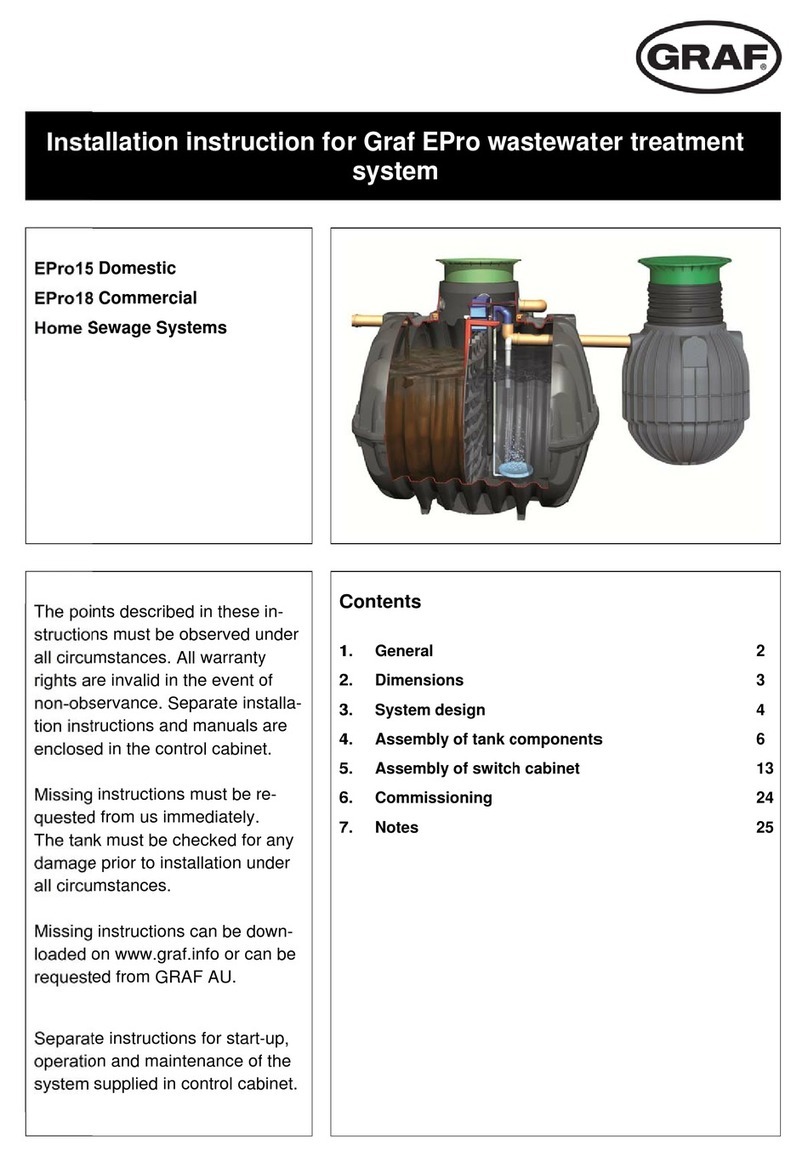
Graf
Graf EPro Series User manual
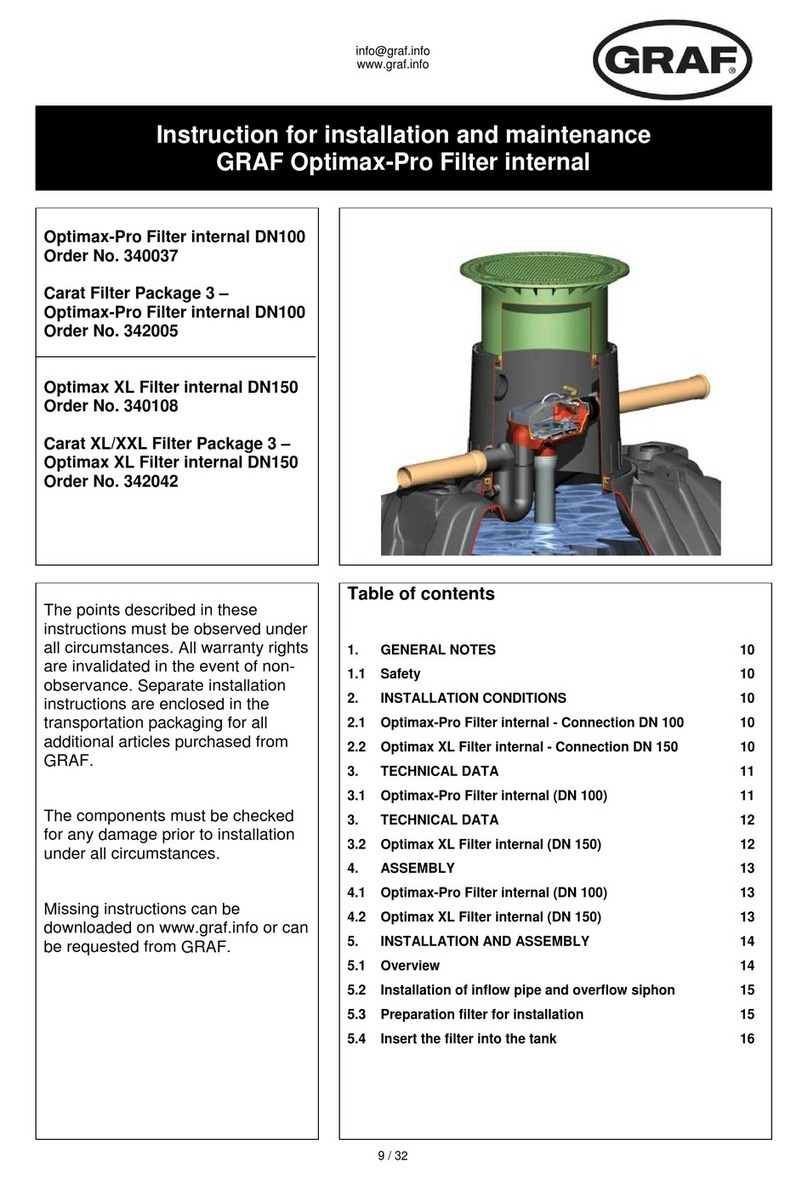
Graf
Graf 340037 Operating and maintenance manual

Graf
Graf EcoPure 150 Instruction Manual
Popular Water Filtration System manuals by other brands

Wisy
Wisy LineAir 100 Installation and operating instructions

Schaffner
Schaffner Ecosine FN3446 Series User and installation manual

Pentair
Pentair FLECK 4600 SXT Installer manual

H2O International
H2O International H20-500 product manual

Renkforce
Renkforce 2306241 operating instructions

Neo-Pure
Neo-Pure TL3-A502 manual
